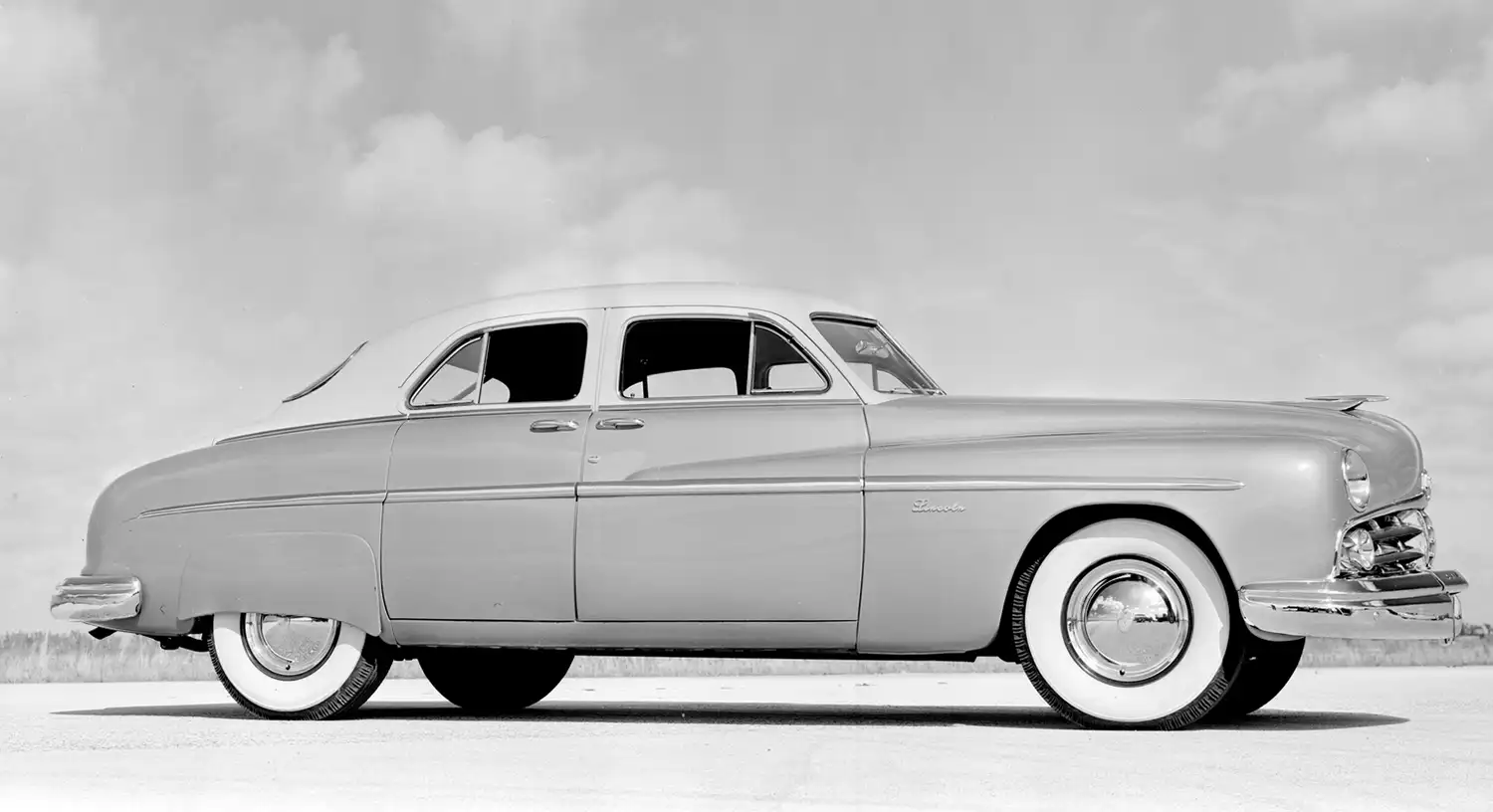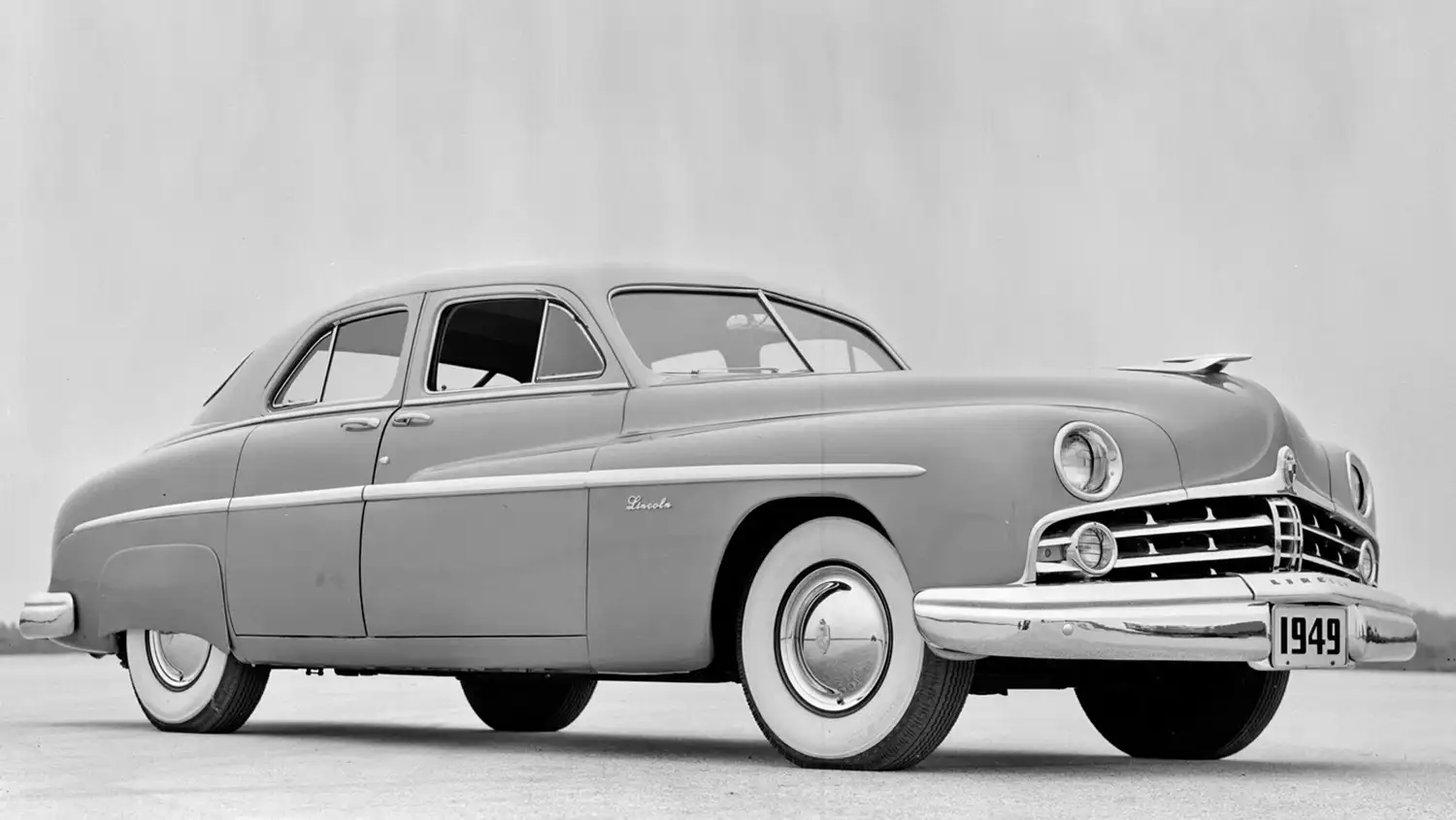
The 1949 Lincoln Sport Sedan is a shining example of post-World War II American automotive design, representing a turning point for the luxury car segment. As one of Lincoln’s first new models after the war, the Sport Sedan captured the essence of post-war optimism, combining sleek styling, modern engineering, and a commitment to luxury.
A Revolutionary Design
The 1949 Lincoln Sport Sedan introduced a completely new design language, departing from the pre-war aesthetic. This model marked the debut of Lincoln’s streamlined, “pontoon” styling, which featured smooth curves and integrated fenders that contributed to a more aerodynamic profile. It also boasted a long, imposing front end and a sloping roofline that gave it a distinct, elegant look. This new design direction was instrumental in helping Lincoln shed its more conservative image, ushering in an era of modernity.
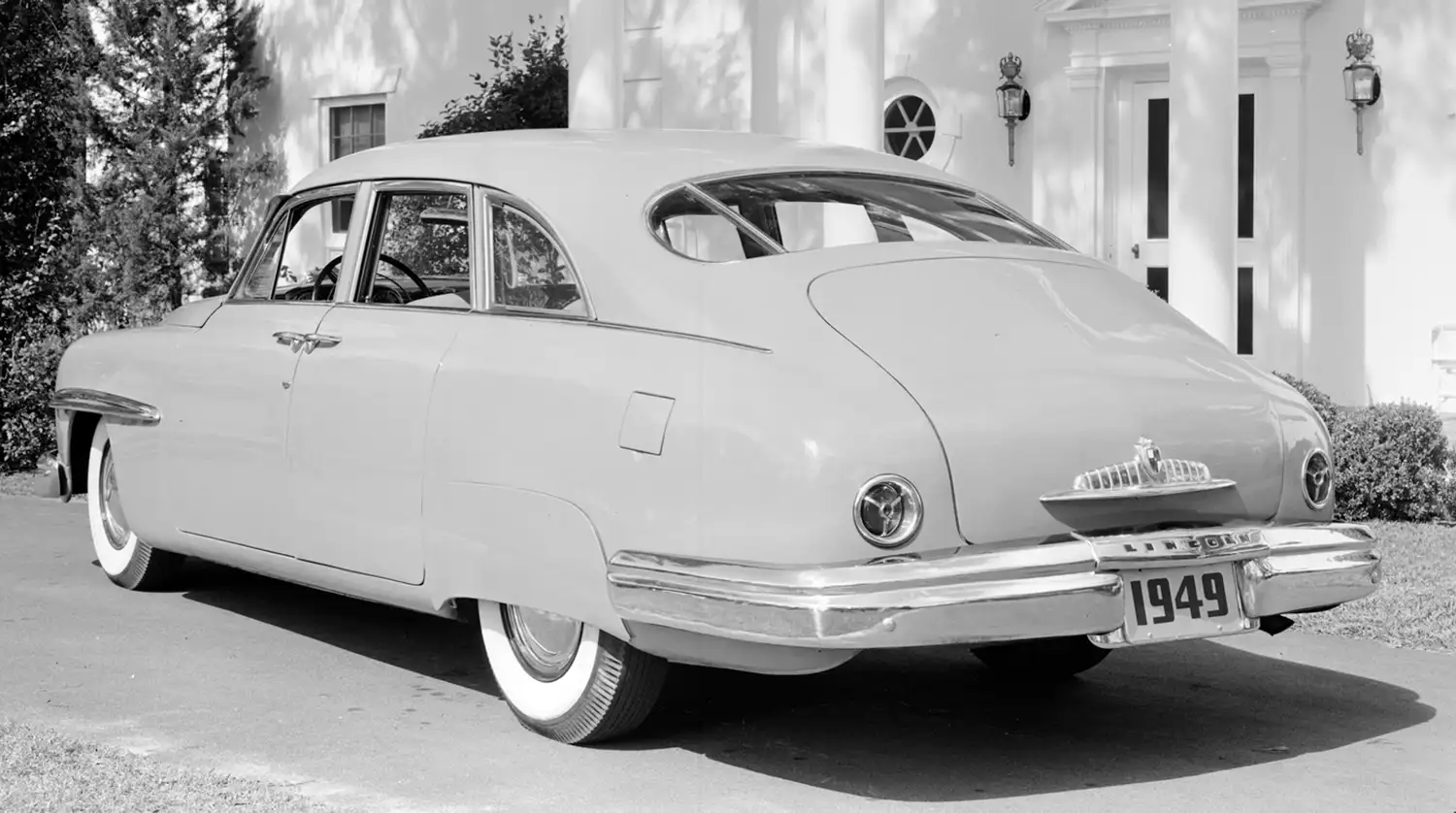
One of the most notable design elements was the “bullet-nose” grille, which added a futuristic flair, making it stand out from other luxury sedans of the era. The car’s overall appearance was bold yet refined, perfectly aligning with the tastes of post-war American consumers who sought both sophistication and modernity.
Under the Hood
Powering the 1949 Lincoln Sport Sedan was a 336 cubic inch (5.5-liter) flathead V8 engine, delivering 152 horsepower. This engine was paired with a 3-speed manual transmission, which could be optionally upgraded to Lincoln’s new Hydra-Matic automatic transmission, providing a smoother driving experience.
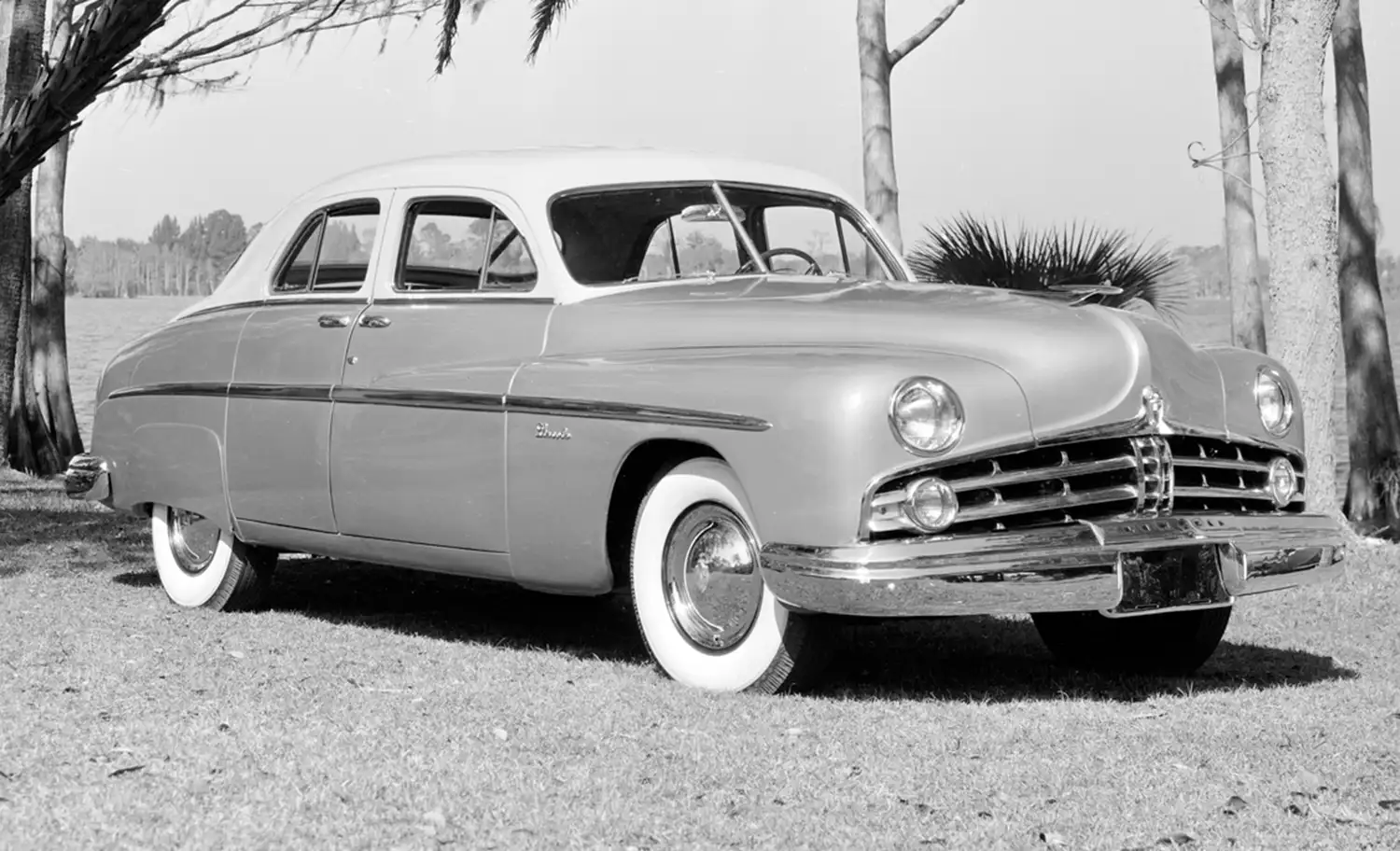
The engine and drivetrain were designed to deliver effortless cruising on highways and city streets alike. The robust V8 offered ample power for a car of its size, while the independent front suspension and hydraulic brakes ensured that the Sport Sedan delivered a comfortable and secure ride.
Luxury Inside and Out
The interior of the 1949 Lincoln Sport Sedan was as impressive as its exterior. The spacious cabin featured luxurious materials and elegant design details, from premium upholstery to chrome accents throughout the dashboard and doors. The wide bench seats comfortably accommodated up to six passengers, and the car was equipped with features such as a push-button radio, heater, and clock—luxuries that set it apart from more utilitarian vehicles of the time.
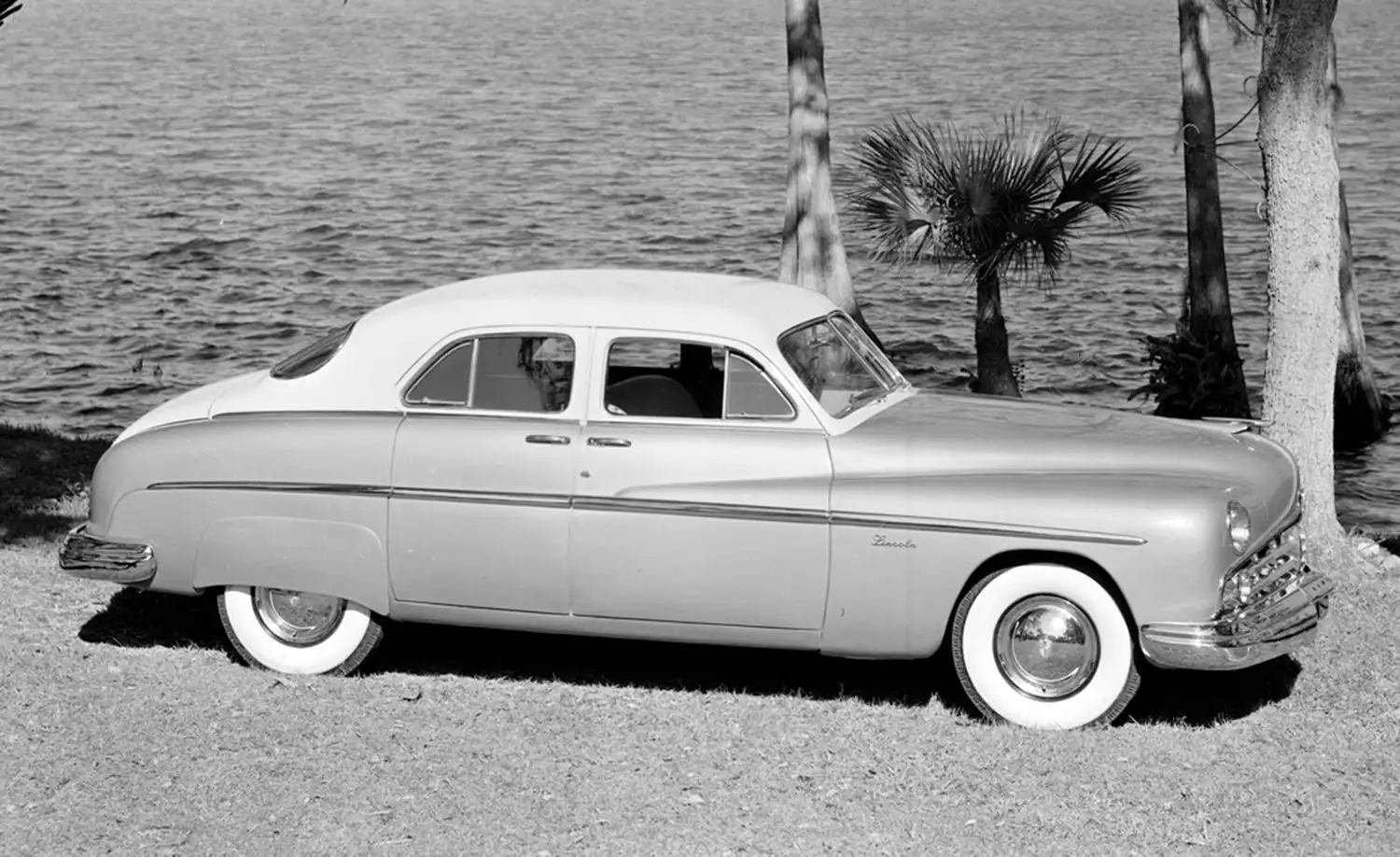
Attention to detail was evident in every aspect of the car’s construction, from the fit and finish of the interior to the smooth operation of its features. The level of craftsmanship reinforced Lincoln’s reputation for building top-tier luxury cars.
A Symbol of Post-War Prosperity
The 1949 Lincoln Sport Sedan arrived at a time when American consumers were eager for modernity and luxury. It became a symbol of the post-war economic boom, appealing to affluent buyers who wanted a car that reflected both status and innovation. This model helped Lincoln solidify its position as a leading American luxury brand, rivaling the likes of Cadillac.
Legacy
Today, the 1949 Lincoln Sport Sedan is celebrated as a post-war classic, cherished by collectors for its groundbreaking design, historical significance, and luxurious features. Its influence on American automotive design can still be felt, as it set the stage for the stylistic and technological advancements that defined the 1950s and beyond.
Whether admired at classic car shows or preserved in private collections, the 1949 Lincoln Sport Sedan remains an enduring symbol of American luxury and design ingenuity from a transformative era in automotive history.
Source: Ford Heritage Vault
This article was crafted with assistance from Chatgpt
